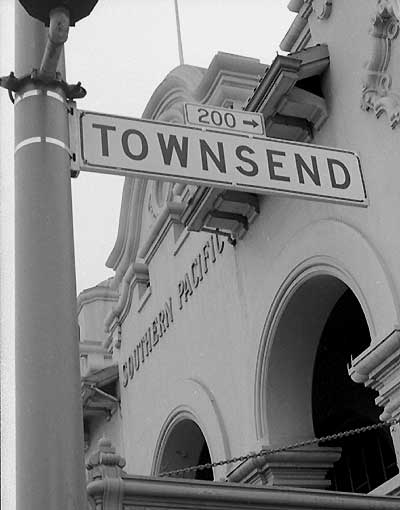
Tracks, Trains and Towers
Part 1, Vintage Facade Photos
Part 2, 1974 in Color
Part 3, Interior and Exterior, 1974
SP Index
Wx4 Staff photographed the following on the same June, 1974 day as in Part 3, except as noted.
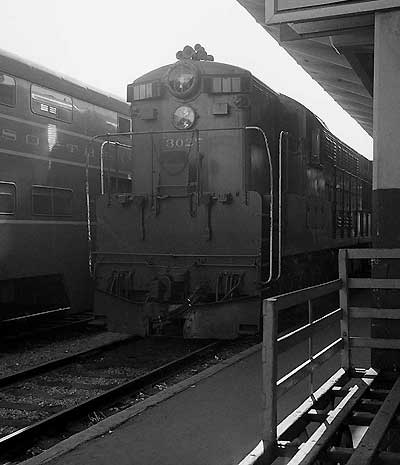
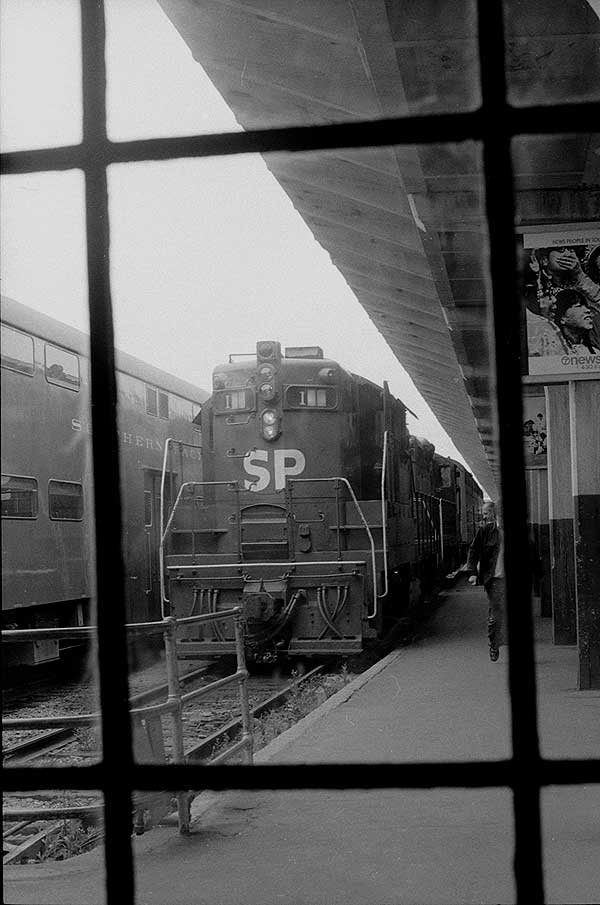
(below) Pulling the cars away from a midday plug's power, SDP-45 #3201.
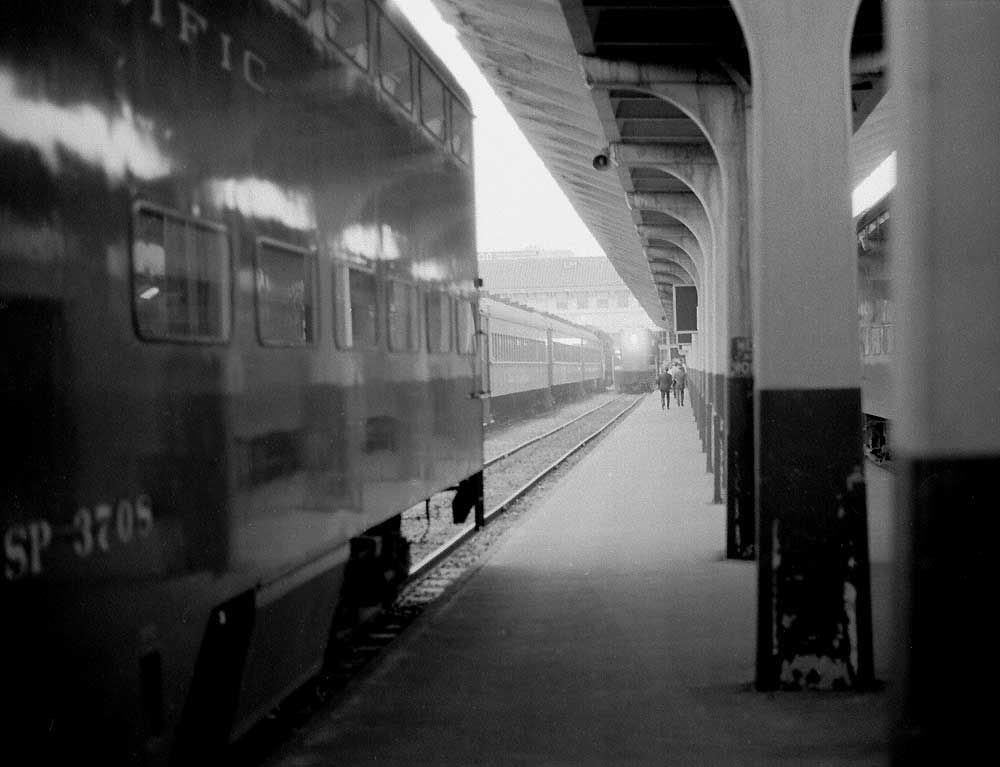
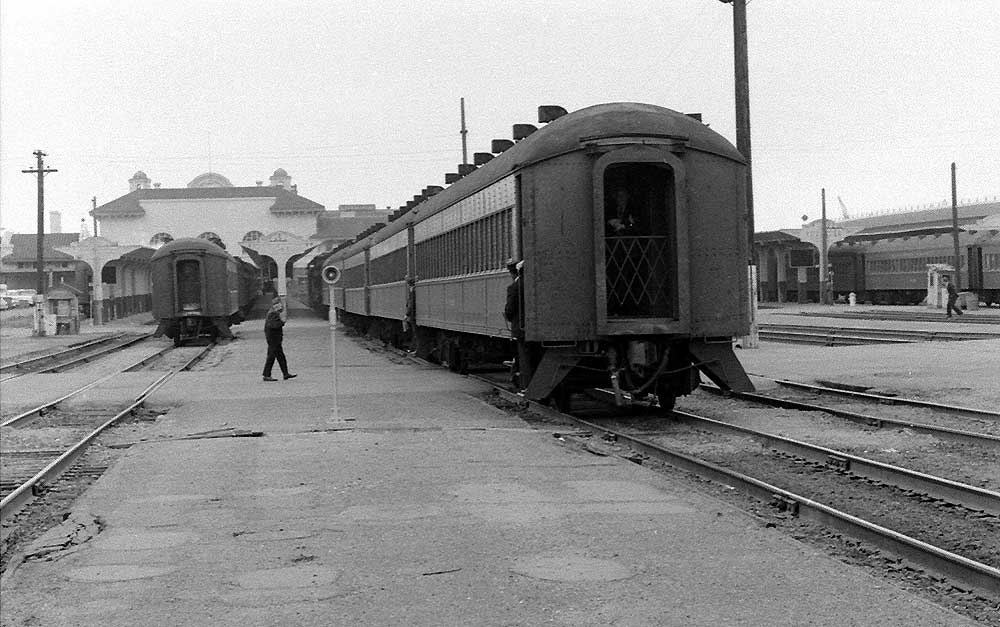
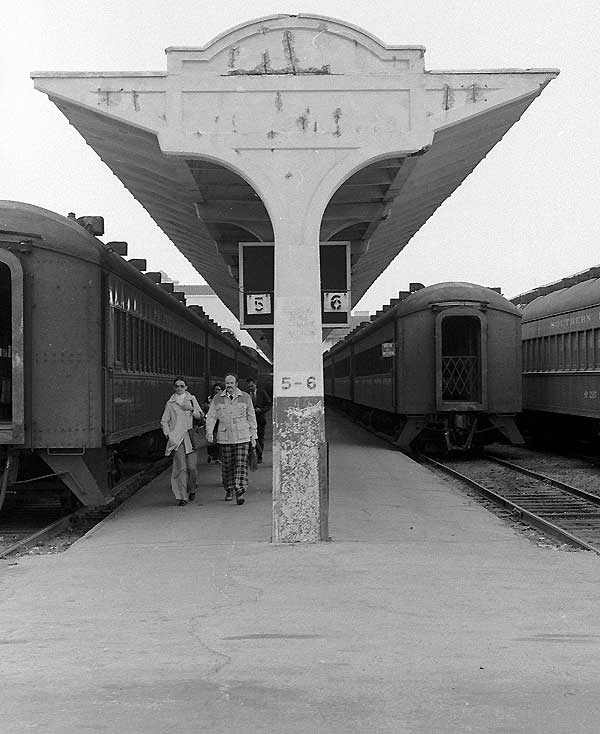
Nevertheless, this still failed to provide adequate car capacity for longer trains, such as the Daylight and Lark, who often arrived at a track on the edge of King Street, so that their locomotives could pull up flush with Third Street. Oversized outbound trains had to be spotted with a cut in the middle at one of the two Fourth streets. Just prior to departure (less than 10 minutes by state law), the road power would couple the head cut of cars against the rear portion.
A third crossing, Jordan "Street", existed at the foot of old Fourth Street Tower, and longer trains sometimes blocked it as well. Wx4 staff has no evidence that this crossing was ever more than towpath-wide.
Some photos from the San Francisco Public Library (SFPL) further clarify the problem:
- The problem in a nutshell, looking west in 1956 (note that New Fourth Street is labeled "W. Fourth St." in photo); SP's freight sheds are in the foreground
- Aerial view of depot, 12-18-52
- At work on New Fourth Street, 10-12-55
Another negative aspect was that passengers routinely used the aforementioned streets as a route to and from the depot, creating frequent close calls. Although flagmen guarded the trains from automobile traffic, they could do little to stop the flow of pedestrians.
The hazards that commuters (willingly) faced are illustrated in a March 14, 1951 photo at the SFPL. Here you see a horde of outbound commuters dashing across the tracks after rushing from the Fourth Street bus stop at Fourth and Brannon. The elbow you see in the vestibule belonged to a guy who had just caught the departing train on-the-fly.
The traffic / pedestrian situation was a particular nightmare for the depot goat crews (below).
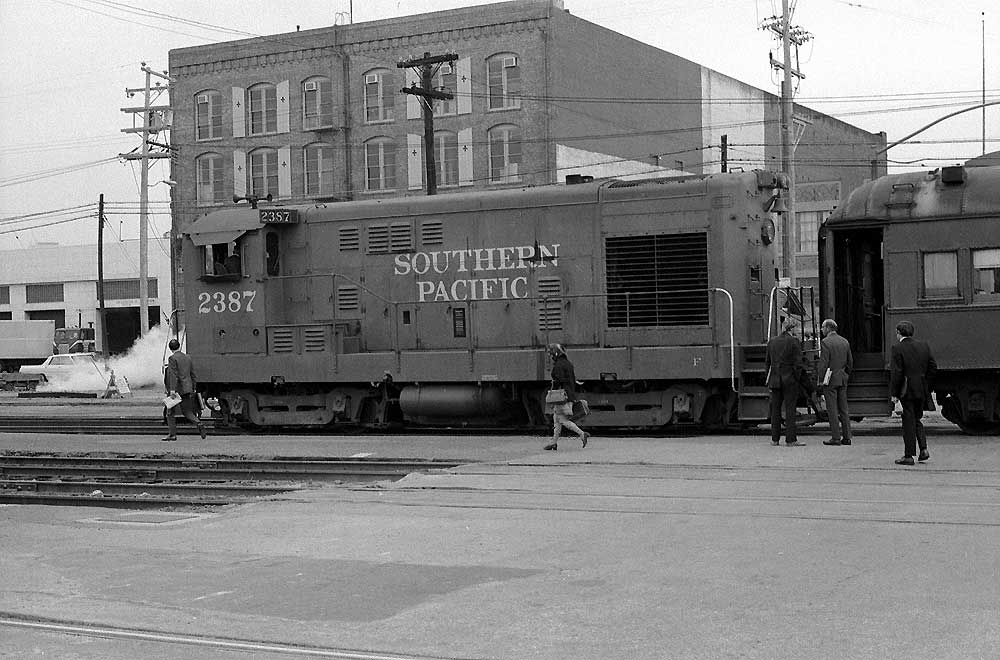
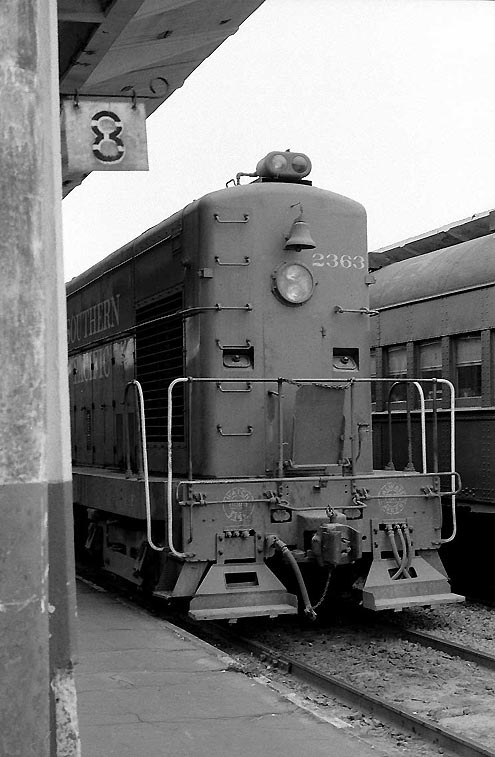
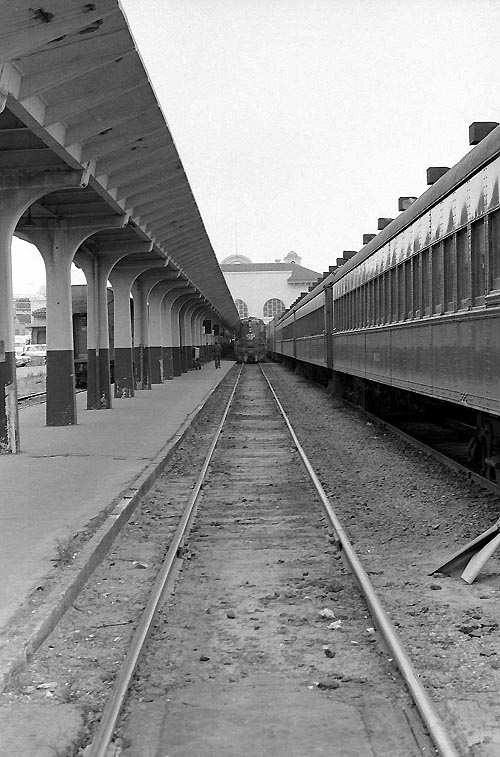
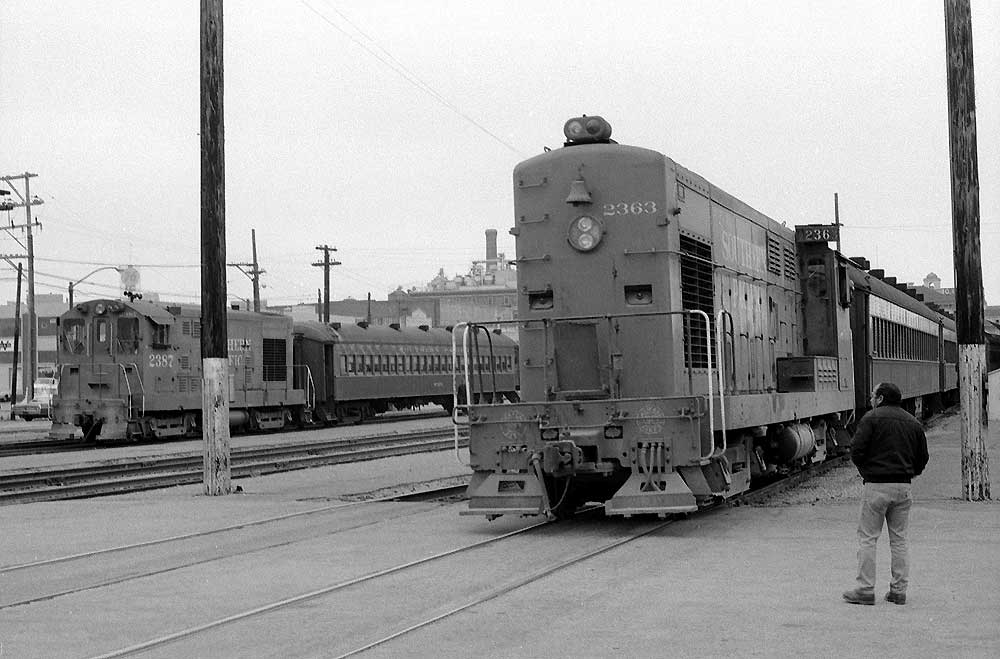
The depot was a busy place, what with all of the pulls and shoves back-and-forth between the depot and the coach yards. Two yard crews were required in 1974. The guy standing on New Fourth Street is the flagman (his body hiding the STOP sign), who suggested, after this picture was taken, that the photographer get a job.
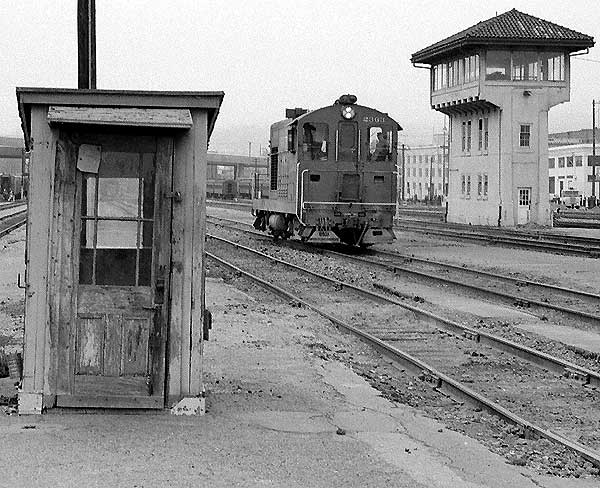
(left) The old tower as seen from the switchman's shanty on New Fourth Street (the new tower is hidden by the 2363).
(below) Number 131, a morning "Fleet" (rush hour) train heads into the depot past the old tower. The new tower is visible behind the Fairbanks-Morse switch engine.
That towpath crossing the tracks in front of the train is Jordan "Street", and terminated at the tower.
To the tower's left are SP's old brown freight sheds. Shortly after they came to disuse in the 1980's, they burned down. About the same time, the identical thing happened to San Jose's ancient San Pedro Street area shed - the original San Francisco & San Jose 1860's era depot. One SP employee claimed that he knew the professional pyro whom SP paid to set fire to both locations to save demolition expense. Plausible, but more likely it was tramps.
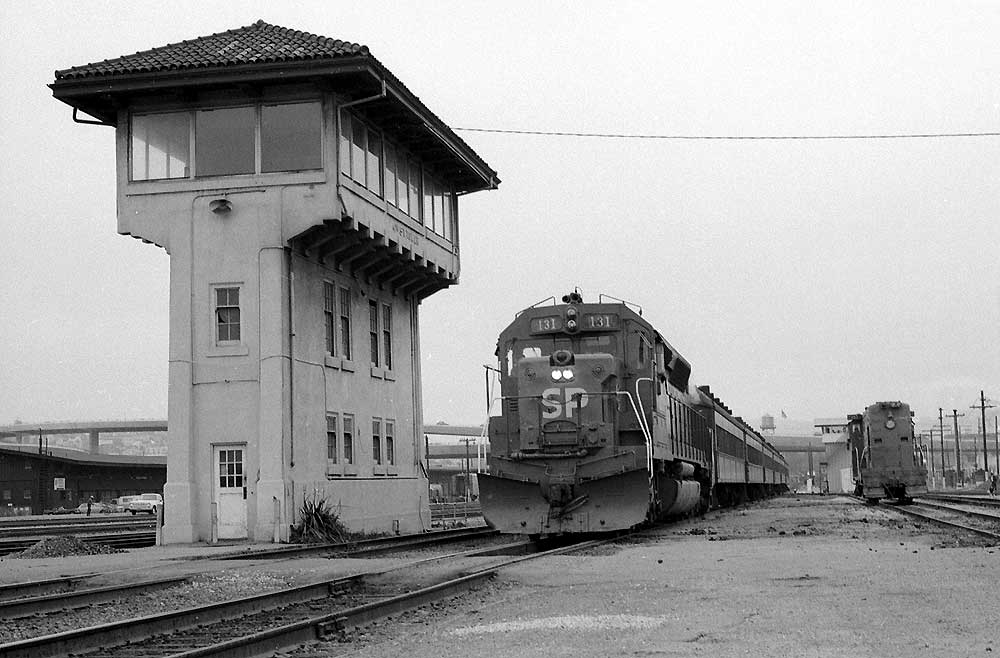
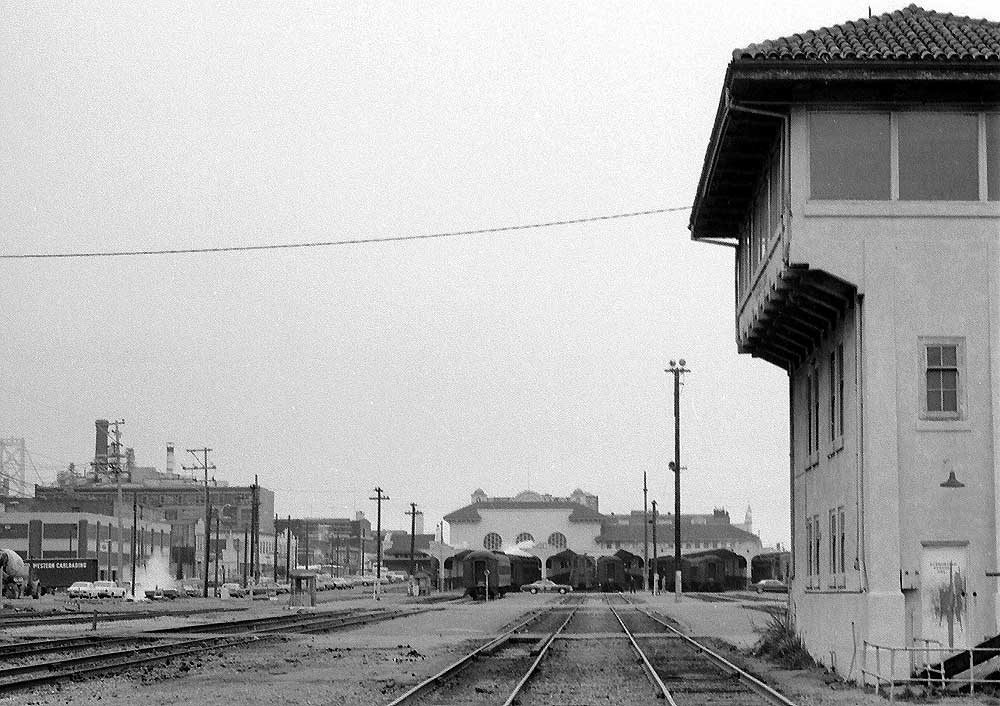
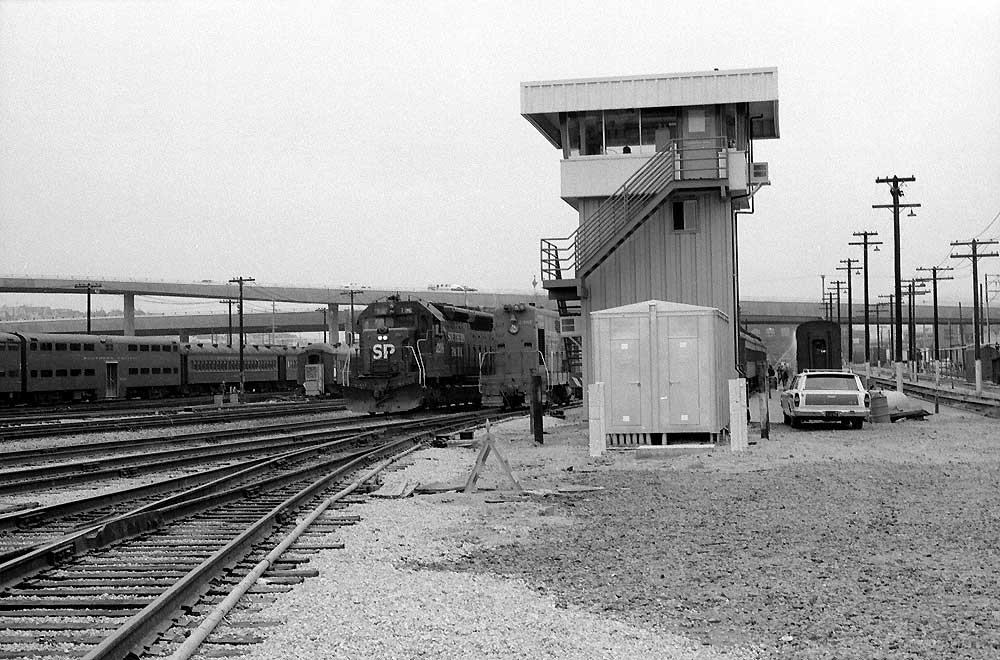
(right) The Coach Yard along Townsend Street: Dig those asbestos-lagged (some of which is on the ground) steam pipes. The area on the street side of the pipes is now occupied by Caltrain San Francisco Mechanical Department's modular offices and storage buildings.
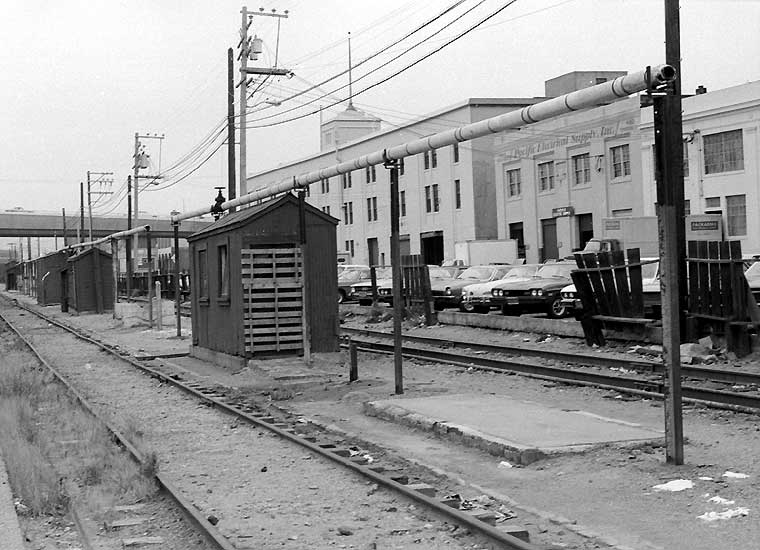
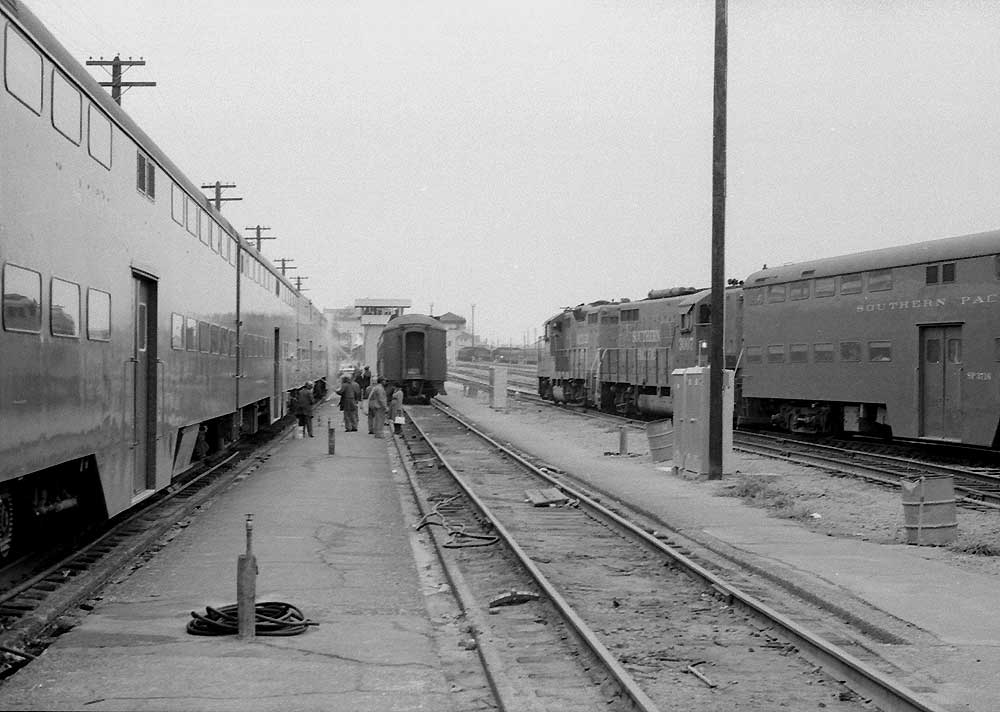
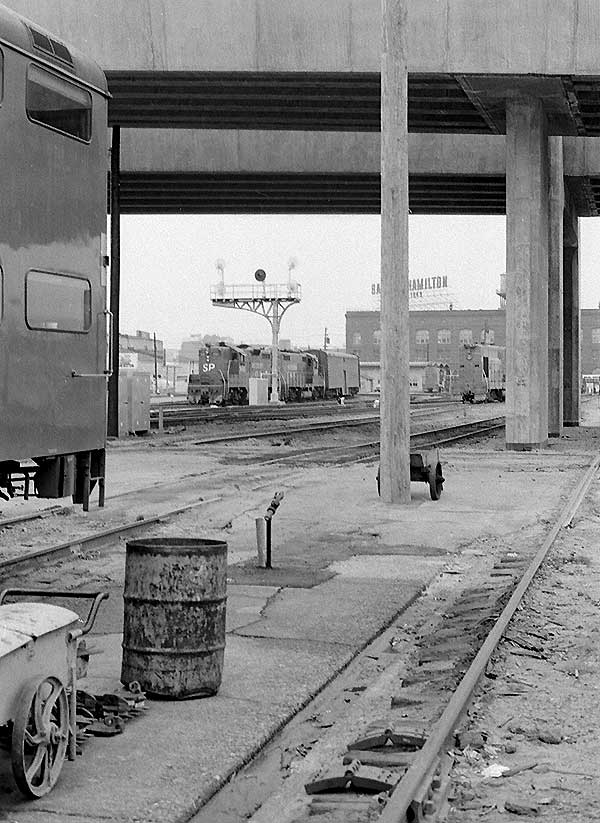
(left) Save the equipment and a few trackage tweaks, things look pretty much the same here today (2003) as they did three decades prior. You're looking towards the Seventh Street Diesel Shop from the coach yard in 1974.
